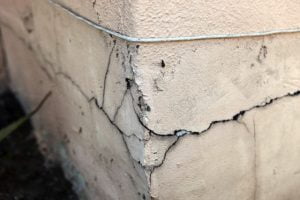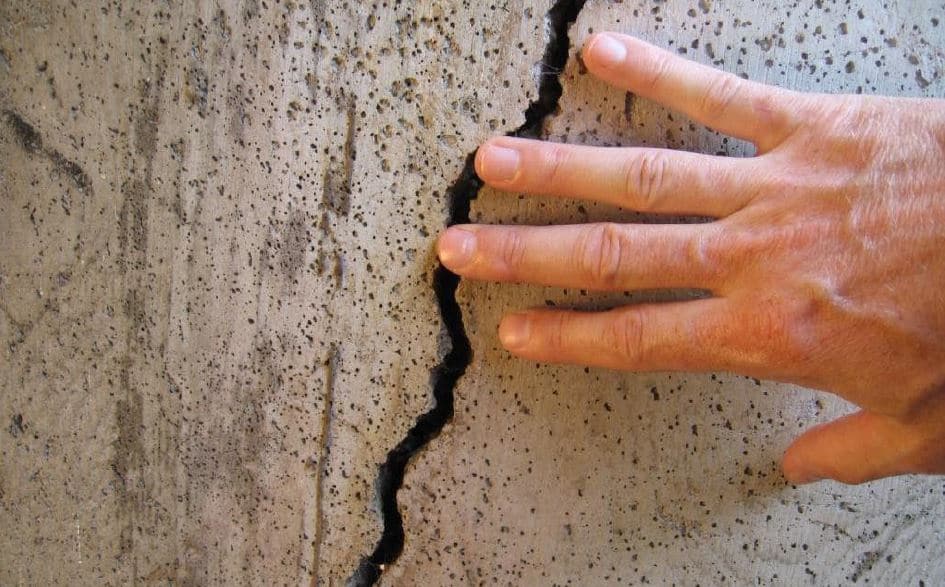Table of Contents
In this article, we will discuss the causes and prevention of cracks.
1. Introduction
The majority of cracks occur when the building or its components or the material of which the building is made upon it’s subjected to forces that are greater than those which it can withstand.
2. Reasons for Crack
Cracks may occur in different components of a building due to
• External applied force in a different component of the building is greater than that of its resisting capacity.
• Poor quality of material used Construction is not carried out in accordance with relevant drawing, prescribed job specifications, work-man-like manner. etc.

3. Types of Cracks
Cracks can be divided into two categories
1) Structural cracks
2) Non-structural cracks
1. Structural cracks
Structural cracks may arise due to
• Incorrect design
• overloading of the structural components
• Overloading of the soil in which the building is constructed.
Structural cracks endanger the stability of the buildings and may be difficult to be rectified. Extensive cracking of foundation walls, beams, columns or slabs, etc are examples of structural cracks.
2. Non-structural Cracks
Nonstructural cracks are generally due to internal forces developed in the buildings on account of the changes in the size of building components due to
a. Moisture variation
b. Temperature variation
c. Effect of gasses, liquid, and solids on the building.
The non-structural cracks can be repaired provided the reasons for Cracks are identified and suitable remedial measures are taken to prevent the reoccurrence. Cracking in plaster, windows floors, etc are examples of non-structural cracking. The cracks can be broadly classified as vertical, horizontal. diagonal, toothed cracks, irregular cracks, or random cracks.
Closely spaced fine cracks on the surface of the material are known as crazing. Some cracks may appear to be similar yet the cause of the cracking may be different.
4. Causes and Prevention of Cracks
The various causes and prevention of cracks are described below.
4.1. Cracks Due to Moisture Changes
Most of the building Ilmlerials like bricks, concrete, mortar, stone, timber, etc have pores. Hence these water-ink increase in size or expand absorbing moisture hid decrease in size or shrink on drying.
Cracks due to moisture changes can be prevented by adopting the following measures.
1. Minimum use of rich cement mortar.
2. Use lean cement mortar or composite cement lime mortar in masonry work.
3. Use the stiffer and leaner concrete mix to allow adequate time for curing and drying.
4.2. Cracks Due to Temperature Variation
All materials expand on heat and contract on cool. Thermal movement, components of structure creates cracks due to tensile of shear stresses. It is one of the most potent causes of cracking in buildings and needs attention.
Prevention
a. Construct joints such as construction joints, expansion joints, control joints, and slip joints. The joints should be planned at the time of design and be constructed carefully. Adequate insulation or terracing treatment over the roof slab and by introducing slip joint between the slab and the supporting wall.
b. Painting the top of the roof with a reflective finish can also serve to minimize cracks
4.3. Cracks Due to Elastic Deformation and Creep
When the walls are unevenly loaded, due to variation in stresses in different parts of the wall the cracks are formed in walls. When two materials having wide different elastic properties are built together under the effect of load, different shear stresses in these materials create cracks at the junction.
Dead and live loads cause elastic deformation in the structural components of a building.
The situation were cracking due to elastic deformation arises, and the preventive measure to avoid such cracks are summarized below.
i) Cracks in masonry when a wall is unevenly loaded
If the building has a large opening in the external walls. It can be seen that portion of the wall immediately below the sill is subjected to much lesser loads as compared to the portion of the wall on either side of the window opening. This results in uneven loading of the wall which may cause vertical cracks.
Prevention
To avoid unequal loading conditions in the same wall.
ii) Cracks in masonry due to deflection of RCC beam or slab
It is observed that when a beam or slab having large spans undergoes collection and there is insufficient downward, loads above the supporting wall, horizontal cracks appear in the masonry at support.
Prevention Cracks of this type can be prevented by designing the slab or beam in such a way that the depth provided is adequate to restrict the deflection within permissible limits.
iii) Cracks at the junction of brick masonry with RCC columns in load-bearing walls.
With the passage of time, RCC columns undergo some shortening due to plastic deformation and creep resulting in vertical cracks appearing at the junction of the column with masonry.
Prevention:
Adequate curing of the RCC columns and providing air gap between the masonry and the column.
iv) Cracking in brick panel wall in the frame structure
• Vertical cracks are formed when the length of the panel is more and the tightly constructed wall between columns,
• The horizontal cracks are formed due to the shortening of columns.
Prevention
a. The construction of the panel wall should preferably be taken up late as possible. so that most of the deformation due to shrinkage er as ee etc. is R.C.C beams and columns in allowed to take place prior to construction of panel wall.
b. The panel wall should not construct tightly between the Itc,c, frames.
c. Movement joints should be provided between the top of the panel wall and the soffit of the beam. Joints may be filled up with some compressible jointing material.
4.4. Cracks Due to Effect of Chemical Reaction
Chemical reactions in building materials increase their volume and internal stress causes cracks. The components of the structure also weaken due to chemical reactions. Some common instances of chemical reactions are the following.
a. Sulphate attack on cement products.
b. Carbonation in cement-based material.
c. Corrosion of reinforcement in concrete.
d. Alkali aggregate reaction.
Prevention
Use dense and good quality concrete i.e. richer mix of cement concrete 1:1.5:3 to prevent cracks.
• For preventing sulphate attack, avoid the use of bricks containing a high percentage of soluble salts:
4.5. Cracks Due to Foundation Movement and Settlement of Soil
Shear cracks occur in buildings when there is a large differential settlement of foundation due to any of the following causes.
• Unequal bearing pressure under different parts of the structure
• Bearing pressure being in excess of safe bearing strength of the soil.
• Low factor of safety in the design of foundation
• Local variation in the nature of supporting soil.
Preventions
1. In case of shrinkable soil, adopt under reamed pile foundation.
2. The structural design of the foundation should be carried out in such a manner as to achieve uniform distribution of pressure on the ground to avoid differential settlement.
3. The foundation should be so proportioned that the safe bearings or soil is not exceeded.
| Read More: Concrete Edging |
4.6. Cracks Due to Earthquake
The crack may occur due to a sudden shift in the lower layer of the earth. The voids in the earth might have suddenly collapsed and been filled with soil from above. Many geological events can trigger earth movement but in continuous movement. This results in a crack.
Preventions
Construction the foundation of building on firm ground while doing construction. Tie up the building worth connecting beams at foundation levne6 door level and roof level.
| Read More: Concrete Grinder |
4.7. Cracks Due to Vegetation
The roots of trees located in the vicinity of a wall can create cracks in walls due to the growth of roots under the foundation. The cracks occur in clay soil due to moisture contained by roots.
Prevention
Do not let trees grow too close to the buildings, compound walls, etc. Remove any saplings of trees as soon as possible if they start growing in or near walls etc.

